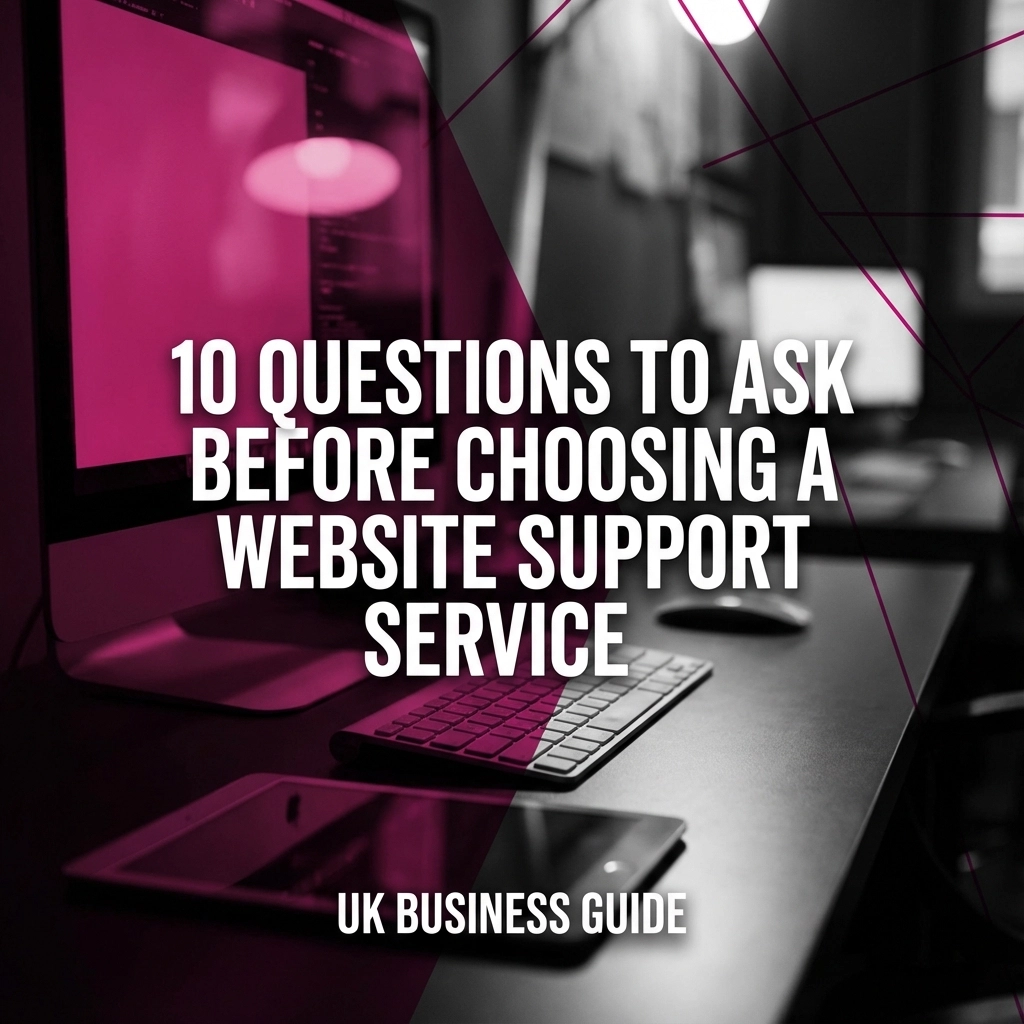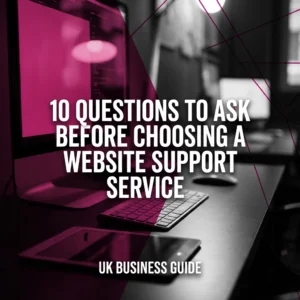Introduction
Effective landing pages are crucial for converting visitors into customers. A well-optimized landing page can significantly increase your conversions and revenue. Here, we outline 10 best-practice practices for optimizing your landing pages.
1: Focus on a Single Goal
A landing page should have a single, clear goal. Multiple goals can confuse visitors and reduce conversions. Identify the primary objective of your landing page, whether it’s capturing emails, driving sales, or promoting a webinar. Prioritising this single goal provides a straightforward path for visitors.
To achieve this, decide on one primary action you want your visitors to take. This could be filling out a form, clicking a button, or making a purchase. Every element on your landing page should support this single goal. Avoid adding multiple calls to action or links that could distract users. The more precise and more straightforward the path, the higher the chance of conversion.
To maintain the focus, use consistent and compelling messaging throughout the page. Reinforce the main benefit of your offer and make it easy for visitors to understand what you want them to do next. This practice ensures a focused and effective landing page.
2: Use Social Proof
Social proof builds visitor trust and encourages conversions. Types of social proof include customer testimonials, trust badges, and reviews and ratings. Incorporate these elements to make your landing page more credible and persuasive.
People tend to follow the actions of others, especially when they are unsure. Displaying reviews and testimonials from satisfied customers can reassure new visitors about the quality of your product or service. Trust badges and endorsements from recognised brands also add legitimacy to your page.
Consider adding case studies or success stories that highlight real-world results achieved by your customers. Use authentic images and names wherever possible to enhance credibility. Displaying a count of your happy customers or clients can further demonstrate your reliability. By leveraging social proof, you create a sense of trust and reliability that encourages new visitors to convert.
3: Optimise for Mobile
Mobile optimisation is more critical than ever in 2024. Simplify your landing page design, use large, tap-friendly buttons, and reduce the amount of text for a better mobile experience. A mobile-friendly page ensures you don’t lose potential customers due to poor usability on smaller screens.
With an increasing number of users accessing websites from mobile devices, your landing page must be fully responsive. Ensure that all elements, including images, buttons, and forms, adjust seamlessly to different screen sizes. Simplify navigation and avoid using heavy graphics that can slow down loading times.
Make sure the text is easily readable without zooming, and place essential elements like call-to-action buttons within easy reach of a thumb. Test your landing page on various devices and browsers to ensure a consistent experience. By prioritising mobile optimisation, you can cater to the growing segment of mobile users and maximise your conversion rates.
4: Use Clear and Concise Headlines
Headlines grab visitor attention and can make or break your landing page. Use short, action-oriented language and focus on benefits rather than features. A compelling headline can draw visitors in and keep them engaged.
Start with a powerful, benefit-driven headline that immediately communicates the value proposition of your offer. Avoid jargon and use simple, direct language that anyone can understand. The headline should give visitors a reason to stay and explore further.
Subheadings can support your main headline and provide additional context. Use them to break up text and highlight key points. Make sure all headings are consistent in style and tone, and clearly indicate the most important information. Keep the overall structure clean and easy to skim, guiding visitors through the page effortlessly.
Remember, the headline is often the first impression visitors have of your landing page. Ensuring it is clear and compelling can significantly improve engagement and lead to higher conversion rates.
5: Use Visual Hierarchy
Visual hierarchy guides visitor attention to key elements on your landing page. Use size, colour, and white space effectively to create a clear structure. Make sure your most important information and calls to action stand out.
Visual hierarchy helps in organising content so that visitors can easily navigate and find what they are looking for. Use larger font sizes and bolder colours for headlines and primary messages. Place the most critical elements, like the call to action button, in prominent positions where they naturally draw the eye.
Employ white space to give elements room to breathe and prevent the page from looking cluttered. Group related information together and use contrasting colours to differentiate sections. Consistent use of fonts, colours, and spacing creates a cohesive and visually appealing layout.
By strategically designing the visual structure of your landing page, you can guide visitors through a seamless journey, ensuring they see the most important information and are more likely to complete the desired action.
6: Reduce Friction
Friction points on a landing page can deter visitors from converting. Simplify your design, reduce the number of form fields, and use auto-fill options to make the conversion process as smooth as possible.
Friction refers to any obstacle that makes it harder for visitors to complete the desired action. This could be a long form, slow loading times, or confusing navigation. Identify and eliminate these barriers to improve user experience and increase conversions.
For forms, only ask for essential information. Each additional field can decrease the likelihood of form completion. Simplify the process by using auto-fill options and clear labels. Ensure the form is visually appealing and easy to understand.
Additionally, streamline your page design to remove unnecessary elements that can distract or overwhelm visitors. A clean, straightforward layout with a clear focus on the call to action can significantly reduce friction and enhance the user experience, leading to higher conversion rates.
7: Use Urgency and Scarcity
Urgency and scarcity can drive visitor actions. Create limited-time offers, use countdown timers, and highlight limited availability to motivate visitors to act quickly. These tactics can significantly improve conversion rates.
Urgency creates a sense of immediate need, making visitors more likely to take quick action. Use phrases like “Limited Time Offer” or “Act Now” to convey urgency. Countdown timers can visually reinforce the limited timeframe available for an offer.
Scarcity taps into the fear of missing out (FOMO). Highlight limited stock or exclusive deals to make your offer more compelling. Show how many items are left or how many spots are available to create a sense of scarcity.
By effectively using urgency and scarcity, you can prompt visitors to act more quickly, reducing the likelihood of them leaving your page without converting. These psychological triggers can significantly boost your conversion rates by creating a sense of immediate need and value.
8: Use Trust Indicators
Trust indicators help establish your credibility. Use security badges, industry certifications, and provide your physical address and contact information. These elements reassure visitors that your site is safe and trustworthy.
Trust is a critical component in converting visitors. Displaying trust indicators on your landing page can alleviate concerns about security and legitimacy. Security badges, such as SSL certificates and trustmarks from recognised authorities, show that your site is secure and that any information shared is protected.
Industry certifications and affiliations with well-known organisations can further enhance your credibility. Include logos or badges of these certifications prominently on your landing page.
Providing contact information, including your physical address and phone number, helps build trust by showing that there is a real entity behind the site. Make it easy for visitors to reach you if they have questions or concerns. By incorporating these trust indicators, you create a safer and more reliable environment, encouraging visitors to take the desired action.
9: Optimize for Speed
Page speed impacts both visitor experience and conversions. Use caching and content delivery networks (CDNs), optimise images and videos, and minimise the number of HTTP requests to ensure fast loading times. A quick-loading page can drastically reduce bounce rates.
Slow loading times can frustrate visitors and lead to higher bounce rates. To improve page speed, optimise images by compressing them without losing quality. Use modern image formats and lazy loading techniques to ensure images are loaded only when needed.
Leverage caching and CDNs to distribute content efficiently. CDNs store copies of your site on multiple servers around the world, reducing latency and ensuring faster delivery.
Minimise the number of HTTP requests by combining multiple files into one, and remove any unnecessary scripts or plugins that could slow down the page. Regularly test your landing page speed using tools like Google PageSpeed Insights to identify and fix performance issues. By prioritising speed optimisation, you enhance the overall user experience and improve your chances of converting visitors.
10: Test and Iterate
Continual testing and iteration are key to landing page optimisation. Use A/B testing and multivariate testing to analyse visitor behaviour and feedback. Make data-driven decisions to refine your landing page and improve its performance over time.
Testing different elements of your landing page allows you to understand what works best for your audience. A/B testing involves comparing two versions of a page to see which performs better. This could include testing headlines, images, call to action buttons, or overall layout.
Multivariate testing takes it a step further by examining multiple variations simultaneously. Analyse the results to identify patterns and insights that can guide your optimisation efforts.
It’s important to continually iterate based on feedback and data. What works today may not be effective tomorrow, so regular testing ensures your landing page remains optimised for peak performance. By making incremental changes and monitoring their impact, you can systematically enhance the effectiveness of your landing page over time.
Conclusion
These 10 landing page optimisation practices for 2024 can help you improve conversions and drive revenue. Ongoing optimisation and regular testing are essential for staying competitive. Implement these practices to create highly effective landing pages that align with your business goals.
If you need help with this key area of your website, talk to us about our Care Plans, as they include TimeBank, which will provide development time for changes and improvements.







